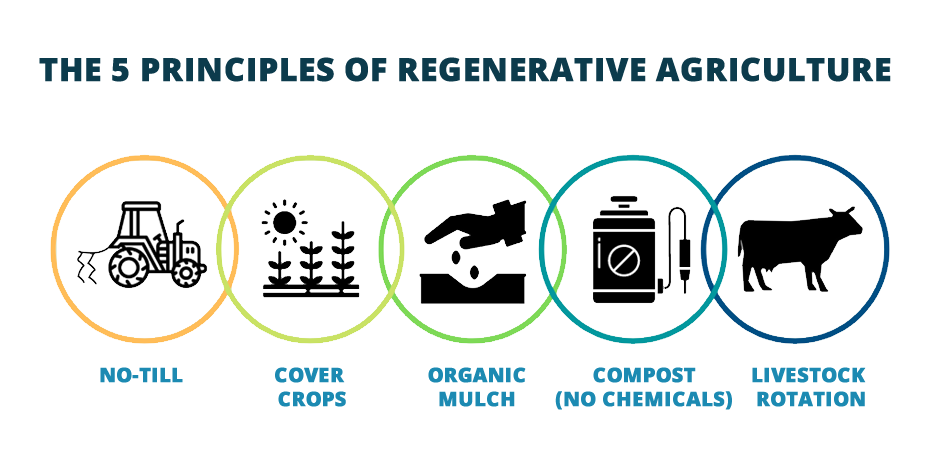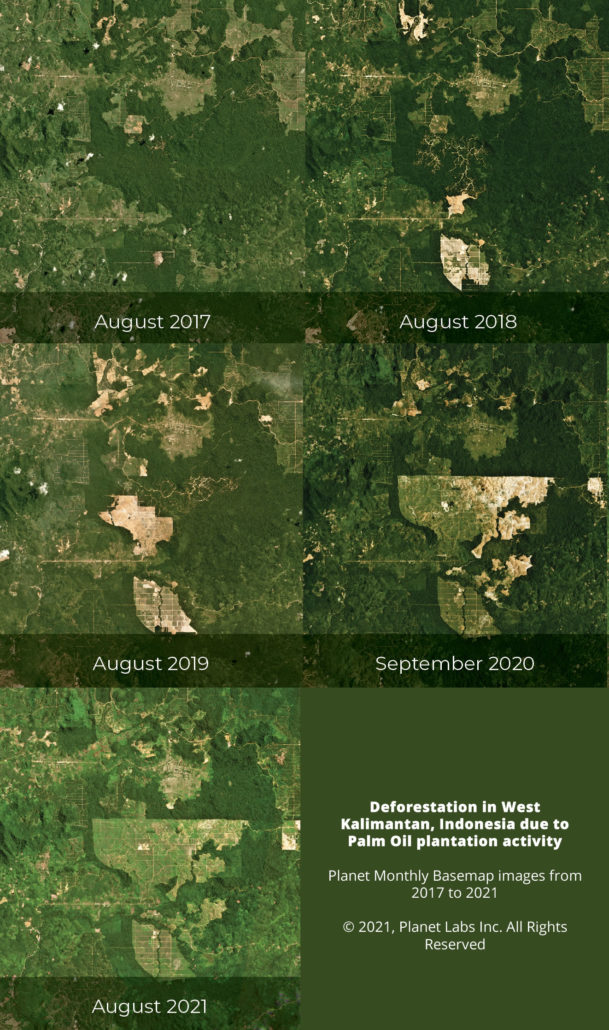Does it take Elon Musk to solve the problem of climate change? With agriculture covering more than half of Earth’s terrestrial surface and contributing roughly one-third of global greenhouse gas emissions, we certainly need some genius to reverse the equation. And this is the promise of Carbon Farming.
Renowned American author Michael Pollan whose body of work explores the socio-cultural & environmental impact of food, deemed it agriculture’s “secret weapon”. In the growing community of “agripreneurs”, a new school of thought has emerged in the past few years, promoting nature-based solutions to restore carbon-depleted soils, and paying farmers to do so while producing the food we like to eat.
But behind the apparent simplicity of the concept, a number of technologies and innovations need to come together to turn agriculture into a carbon sink.
CARBON FARMING IS ROOTED IN AGE-OLD FARM WISDOM
The goal of regenerative agricultural practices or carbon farming, is to take excess carbon out of the atmosphere, where it causes global warming, and store it in the soil, where carbon aids the growth of plants. Farmers need to think of carbon as their fertilizer, because it’s what drives a healthy system.

Most carbon farming techniques mirror age-old organic growing methods such as enriching the soil with using compost, rotating crops, and techniques like no-till farming. Here are the 5 key principles^ of regenerative agriculture:
1. NO-TILL: Tilling mixes soil with air, allowing carbon to oxidize back into the atmosphere. Instead, focus on perennial crops that don’t require tillage, or use a no-till seed drill for large-scale annual plantings.
2. COVER CROPS: Fast-growing species such as legumes keep the soil covered and enriched with carbon through the winter and may also be planted together with cash crops during the growing season to compensate for carbon lost when those crops are harvested.
3. ORGANIC MULCH: Cover the soil around small-scale plantings with a wood chip or straw mulch to prevent carbon losses. On large plantings, leave crop residue in place as mulch. As it decomposes, the residue fuels the carbon cycle in the soil.
4. COMPOST: Compost is rich in a stable (not easily oxidized) form of carbon. Carbon farmers recommend dusting it over the surface of the soil rather than tilling it in.
5. LIVESTOCK ROTATION: Moving concentrated herds and flocks of animals through a series of small paddocks on a regular basis is preferable to letting the animals forage continuously over a single large area. Many carbon farmers move their animals every day and try to let each paddock “rest” as long as possible between grazings.
In addition to being rooted in traditional wisdom, regenerative agriculture solutions are also a relatively inexpensive way of sequestering carbon. Studies estimate that carbon farming costs US$10-$100* per ton of CO2 removed, compared with $100-$1,000 per ton for technologies that remove carbon from the air through direct capture.
^Source: Brian Barth, Modern Farmer
*Source: The role of soil carbon in natural climate solutions, March 2020, D. A. Bossio, S. C. Cook-Patton, P. W. Ellis, et all.
…..AND IT’S GAINING MOMENTUM
There is a lot of excitement around carbon farming. Corporations across the value chain are recognizing the impact of carbon farming and are investing in new models that integrate and commit to regenerative agriculture practices.
Just in the past few weeks three companies announced major carbon farming initiatives. Cargill introduced a new revenue stream for farmers as part of a 10 million acre regenerative agriculture commitment under their Cargill RegenConnect™ initiative. It links farmers to the emerging carbon marketplace and helps scale the voluntary adoption of regenerative agriculture practices. Nestlé laid out its plans to support and accelerate the transition to a regenerative food system. It is investing CHF 1.2 billion over the next five years to spark regenerative agriculture across the company’s supply chain, using three primary levers to help farmers adopt regenerative practices:
• Apply state-of-the-art technology and provide technical assistance
• Offer investment support, and
• Pay premiums for regenerative agriculture goods.
And finally Dutch-brewer Heineken announced that it will explore regenerative practices across 7,000 acres of winter and spring barley varieties in Northern England, adding an element of sustainability to one of the most popular beverages in the world.
With complex and fragmented supply chains, encouraging virtuous practices not only requires the right set of incentives but also ways to check and monitor. Carbon markets had kept us hopeful for years, before collapsing in 2013, riddled with lack of transparency and clear standards to measure additionality. Can new technologies come to the rescue of this failing concept? If Swiss precision ag company Gamaya can address the nematode problem in soybean by using satellite imagery to create a mapping tool of the damage being done by microscopic worms, where is the limit?
CLEARING THE AIR ON SATELLITE IMAGERY’S ROLE IN CARBON FARMING
From the early days of Landsat to present-day commercial providers, agriculture has been one of the largest adopters of satellite imagery. But when most people think of satellite images in agriculture they imagine mapping of farm borders and high level insights on soil conditions. But it can achieve much more, and below we have clarified three doubts that arise when we think of satellite imagery as an enabler in carbon farming in Asia:
1. Images are lovely, data is nice, but what farmers need are actionable insights
A satellite image is more than meets the eye. By combining data from different portions of the electromagnetic spectrum, satellite data can be used to assess crop vitality with indices like the Normalized Difference Vegetative Index (NDVI), which shows whether plants are under stress, and what lifecycle stage a crop is in. Agri analytics platform Granular leverages satellite data from Planet to develop simple visual digital platforms that help farmers optimise their inputs like fertilizers and stay on top of threats to their crops. Earth observation data can complement field work in research evaluating the feasibility and effectiveness of regenerative agricultural practices. Satellite imagery can be used at the field level to monitor management practices in farming. This data can also be used to calculate the biomass and carbon sequestration value of plants, which helps determine how effective cover crops are in protecting an area in a scalable, cost and time effective way.


Download Planet’s latest Agriculture eBook
2. Aren’t images from drones better than those from satellites?
Drones are great. They deliver higher resolution imagery over fields and are capable of delivering detailed insights to growers. But drones are expensive to fly and they can only cover so much ground. Plus, drones require many man-hours and a lot of planning. As your farm size increases, so do the hours. A solution with satellite imagery scales. With satellite imagery, you may trade spatial resolution for coverage, but when you need to deliver reliable cost-effective insights at scale, there’s really no alternative.
And while some satellite imagery may be too fuzzy to discern useful insights, PlanetScope’s medium spatial (3.7 meter) resolution is ideal for discerning fine details, even in smaller-scale farming operations. Today, Planet’s satellite data can supply a tremendous volume of data points to increase the effectiveness of modelling and is being used in academic research to investigate the potential of carbon sequestration to fight climate change, with drones that just wouldn’t be feasible.

3. Is this really relevant in Asia where there are predominantly smallholder farmers?
It is true that Asia is just at the beginning of its journey in the use of satellite imagery and more so for concepts like carbon farming. Agri solutions in the region undoubtedly face a steeper challenge in implementation because of the vast number of small holders. At FFA2021 Kelvin Chiu (Silverstrand Capital), Ying Li (The Nature Conservancy in China) and Anastasia Volkova (Regrow Ag) talked about regenerative farming practices in Asia. Interestingly, their stance is that Asia can leverage the small holder farmer base to their advantage in the journey to regenerative practices. Small holders tend to be more connected to the land and care more about the local ecology. In contrast, commercial farms like plantations have for long essentially cared about their yield. Yet, developing or adapting infrastructure to support regenerative systems will require significant capital. Asia thus needs transition financing. And whether this capital is provided by crop insurers or other financial institutions, reliable up-to-date satellite data from daily data providers like Planet will be a cornerstone of this transition, especially in the tropical belt where weather patterns are very difficult to model.
At our upcoming Future Food Asia conference in June 2022, we will dive deeper into how satellite imagery can be game-changing for carbon farming. Meanwhile, if you want to brush up your understanding of innovative applications of satellite imagery in agriculture, download Planet’s latest Agriculture eBook: From Imagery to Data Shifting Approaches in Digital Agriculture.
